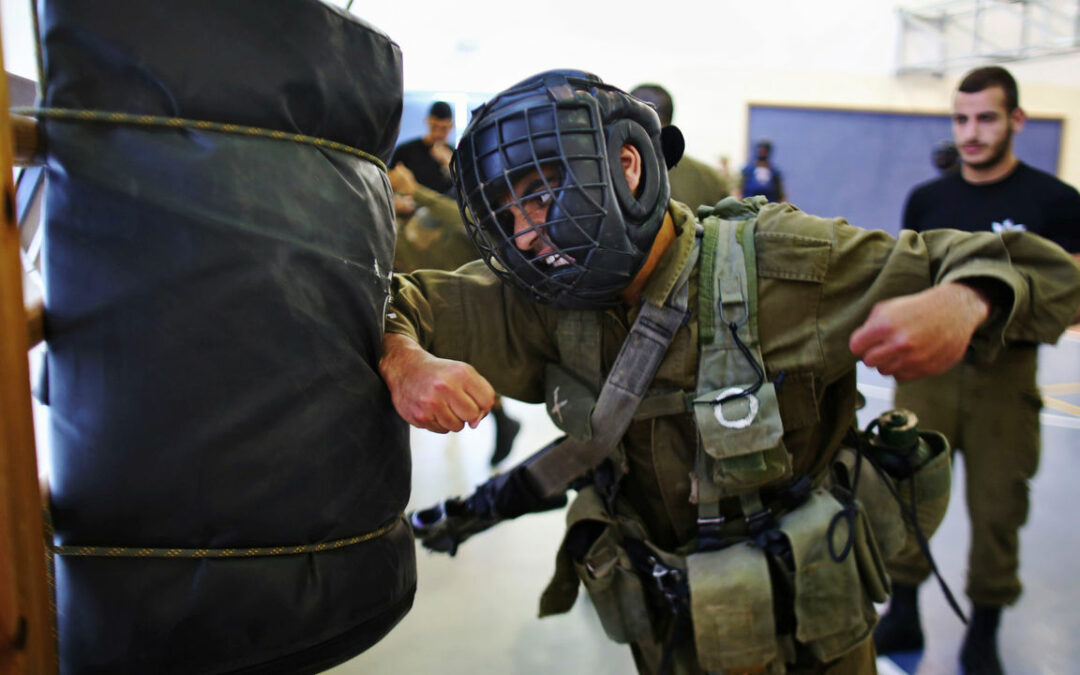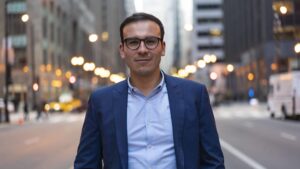GYMS IN ISRAEL that teach krav maga, an Israeli martial art, have seen enrolment soar following Hamas’s terror attacks on October 7th. Training in krav maga is up in other countries, too. Many of the new krav maga enthusiasts around the world are non-Jews, so media warnings about rising antisemitism are not the only explanation. Strong pro-Israeli feelings among some people are also playing a role. What is krav maga, and why has it become both popular and political?
Krav maga means “contact combat” in Hebrew. European Jews developed the fighting system in the 1930s to defend themselves in pogroms and from bullying by antisemites. Krav maga draws from a variety of older martial arts, including judo, karate and muay thai. But it also teaches how to parry modern threats. Students learn, for example, how to maintain control of a car if they are attacked by a passenger. In the 1950s the new Israeli state’s army adopted and refined krav maga. Today’s Israel Defence Forces (IDF) trains all recruits in the discipline. With military service obligatory for young citizens, krav maga has become strongly associated with Israeli culture.
Spiritual discipline and exquisite motor control are central to many martial arts. But krav maga is a “meat-and-potatoes” system. It uses simpler moves that harness instinctive gestures. These include strikes to a foe’s eyes, nose, throat and groin, the discipline’s signature moves. Such tactics would generally be against the rules in martial arts designed for competition rather than purely for self-defence. Other fighting systems can inflict more damage, and may look more elegant. Yet krav maga is easier to learn and to use in the heart-pounding frenzy of a real fight. Students learn to fight with objects at hand and in places where fancy techniques may be impossible to employ—not just in vehicles, but in water, on stairs and in a lift.
The growing demand for krav maga training in Israel is partly because of the formation of hundreds of civilian-defence squads since October 7th. Known as kitat konenut, these volunteer “readiness” groups patrol with police and typically carry firearms. Still, proficiency in krav maga is a requirement for membership, says Yoel Ohnona, a former IDF commando who is training an outfit that will soon begin operations in Ashdod, south of Tel Aviv. In Israel, he says, attackers often use knives, which they can draw more quickly than a defender can unholster a handgun.
Outside Israel, politics is generating interest in krav maga. In France courses are “overflowing”, says David Hadjeje, a krav maga trainer in Paris. Jews are joining because of growing fears of antisemitism; Christians worry about broader “anti-Westernism”, Mr Hadjeje notes. His studio is training 40% more students than before October 7th. In America Greg Dziewonski, the national director of the Krav Maga Federation-AC’s network of affiliate gyms, reports “a visible increase” in demand from pro-Israel Republicans.
The federation has overseas affiliates in 26 countries. Its founder, Alain Cohen, who is based in Ashdod, says that, although enrolment has increased sharply outside Israel, some pro-Palestinian students have recently quit. Instructors have expelled other students after debates about Israel escalated into overly aggressive sparring. Mr Cohen says the problem is most evident in areas where liberals predominate. He calls it “completely crazy”.
Fans of krav maga laud its ethos as no-nonsense self-defence stripped of flowery gestures and fluffy philosophy. But, as krav maga’s profile rises, so does criticism of the sport, laments David Kahn, an author of books about it and owner of two training centres in New Jersey. Some critics highlight krav maga’s association with Israel’s armed forces to slam it—unfairly, he says—as “brutal and lawless and excessive force”. If the war in the Middle East continues, krav maga will probably get even more attention.■









